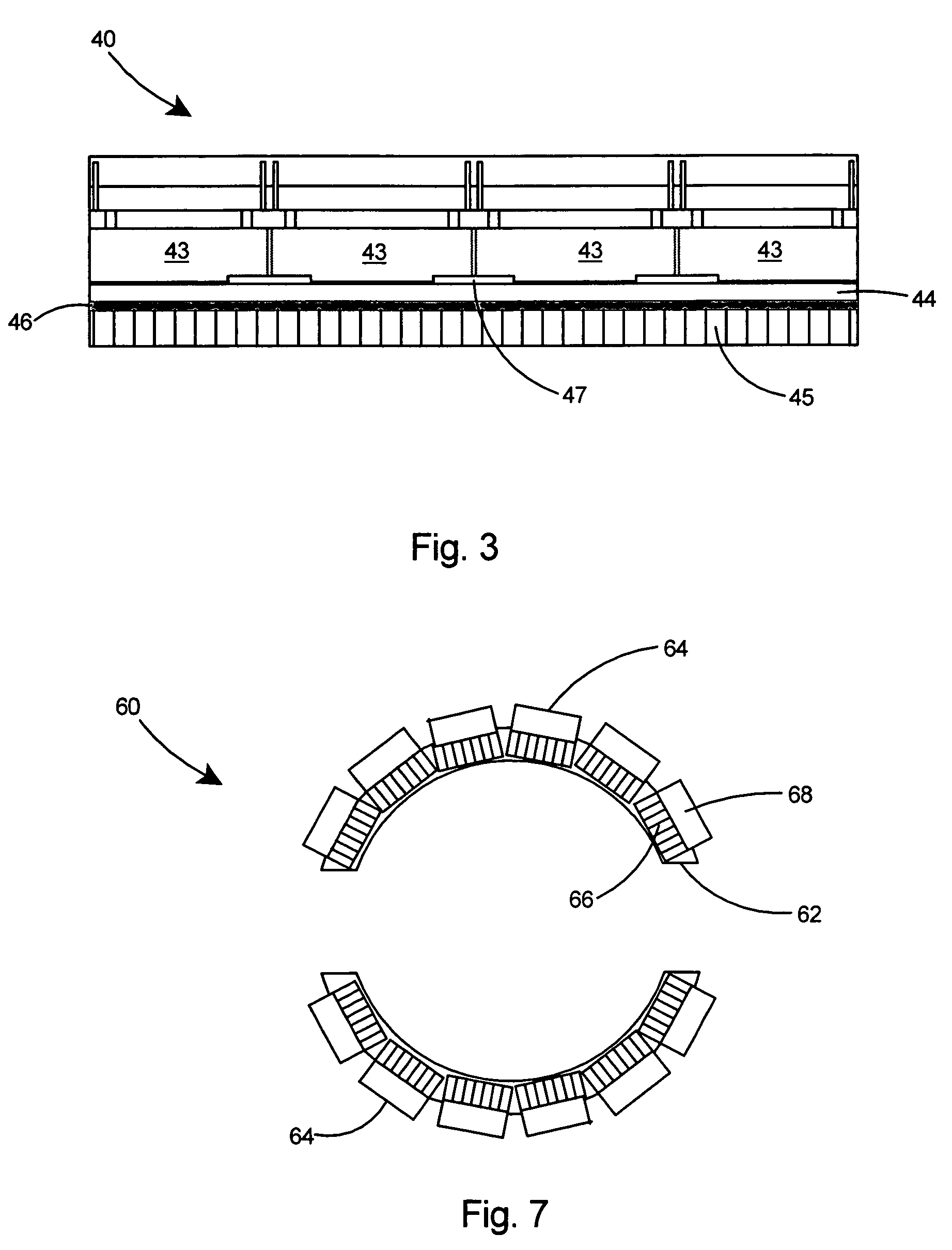Compact and mobile high resolution PET brain imager
a brain imaging and mobile technology, applied in the field of pet imaging, can solve the problems of large scanners, insufficient brain imaging modalities such as pet+ct and mri+pet, and high cost, and achieve the effects of not being optimized for brain imaging, not being able and being unable to meet the needs of patients
- Summary
- Abstract
- Description
- Claims
- Application Information
AI Technical Summary
Benefits of technology
Problems solved by technology
Method used
Image
Examples
first embodiment
[0078]Referring to FIG. 2 there is shown a PET photodetector module 30 for constructing the compact brain imager of the present invention. The photodetector module 30 is based on compact, 1″ or 2″ in size, position sensitive photomultipliers (PSPMTs) 31 from Hamamatsu Corporation of Bridgewater, N.J. or Burle Industries of Lancaster, Pa. The photomultipliers 31 are coupled to an array 33 of 2×2×10 mm LYSO scintillator pixels. In the present invention, a modular approach is used in constructing the PET photodetector module 30. The detector module 30 includes an array of compact H8500 or H9500 flat panel PMTs 31 using high-rate resistive readout electronics 32. The position sensitive flat panel PMTs 31 are placed in a tight array and coupled to the scintillator array 33 through a window 34 and an optical light guide. The flat panel Hamamatsu H8500 or H9500 PMTs are each approximately 5 cm×5 cm in size, to obtain coverage of about 20 cm per detector module 30. Reflective strips 35 are ...
second embodiment
[0079]Referring to FIG. 3 there is shown a compact brain PET detector module 40 based on an array of 16 (4×4) Burle 85001-501 MCP (microchannel plates) PMTs 43 available from Burle Industries of Lancaster, Pa. The 85001-501 PMTs 43 are coupled through optical spreader window 44 to a scintillation array 45 encapsulated behind a window 46. Reflective strips 47 are placed in the dead regions between the MCP PMTs to improve scintillation light collection from ˜2 cm wide dead regions between these MCP PMTs. The shielding is omitted in this figure.
third embodiment
[0080]Referring to FIGS. 4-6, a third and preferred embodiment of the PET detector head is produced using silicon photomultipliers (SiPMTs) in lieu of the position sensitive PMTs. the photodetector module 50 is the preferred construction for the brain imager of the present invention as the SiPMTs provide a more compact and lighter weight imager. Typically SiPMT modules come in smaller size units of approximately 3 mm×3 mm to 5 mm×5 mm area and 1.5 mm in thickness. When combined with onboard electronics, the thickness of the SiPMT plus onboard electronics is less than 1 cm. Arrays of SiPMTs are needed to cover the desired active field of view. FIGS. 4-6 show an example of how to achieve a silicon PMT based photodetector 50 (FIG. 6) of approximately 5 cm×5 cm active field of view using nominal 12.5 mm silicon PMT basic imaging modules 52 (FIG. 4) each composed of sixteen 3 mm basic silicon PMT units 54. As shown in FIG. 4, the basic initial imaging module 52 can have an array of sixte...
PUM
 Login to View More
Login to View More Abstract
Description
Claims
Application Information
 Login to View More
Login to View More - R&D
- Intellectual Property
- Life Sciences
- Materials
- Tech Scout
- Unparalleled Data Quality
- Higher Quality Content
- 60% Fewer Hallucinations
Browse by: Latest US Patents, China's latest patents, Technical Efficacy Thesaurus, Application Domain, Technology Topic, Popular Technical Reports.
© 2025 PatSnap. All rights reserved.Legal|Privacy policy|Modern Slavery Act Transparency Statement|Sitemap|About US| Contact US: help@patsnap.com



